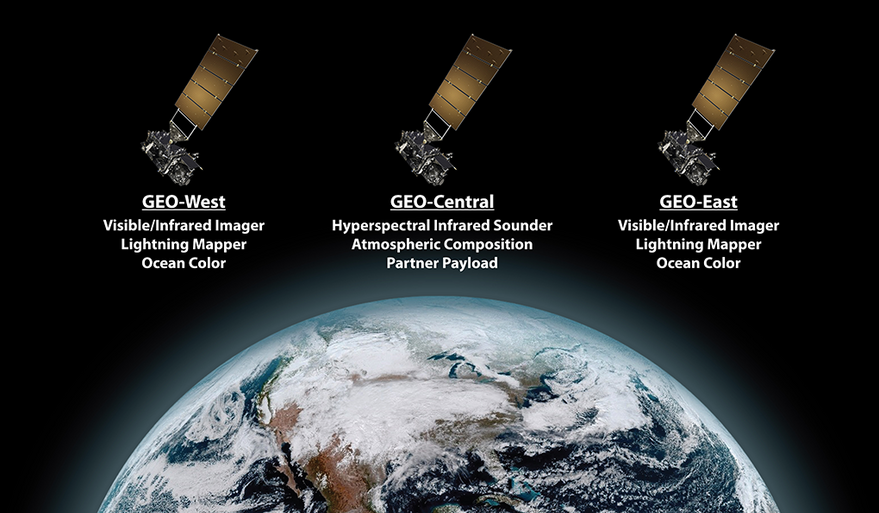WASHINGTON — Congress has passed a final fiscal year 2024 spending bill that provides, in some cases, significantly less funding than requested for civil space programs.
The Senate passed a spending bill March 8 that combined six separate spending bills, including those for commerce, justice and science (CJS) and transportation. The House passed the bill two days earlier, and the Senate passage came hours before a continuing resolution funding those parts of the government was set to expire.
The bill was unchanged from what House and Senate appropriators released March 3. It provides NASA with $24.875 billion for 2024, 8.5% below its original request and 2% lower, even before adjusting for inflation, from what NASA received in 2023.
Other civil space programs in the bill had mixed outcomes. Two ongoing weather satellite efforts at the National Oceanic and Atmosphere Administration, the GOES-R geostationary program and the Polar Weather Satellites program, received their full request of $276 million and $342.4 million, respectively.
The GOES-R program is nearing the launch of its fourth and final satellite, GOES-U, scheduled for no earlier than May on a Falcon Heavy. The Polar Weather Satellite funding will support continued work on the third and fourth Joint Polar Satellite System (JPSS) series of satellites, scheduled for launch late this decade and in the early 2030s.
However, the bill reduces funding for follow-on weather satellite programs in low and geostationary orbits. It provides $285 million for the GeoXO line of next-generation GEO weather satellites, less than the request of $417.4 million and the same the program received in 2023.
For LEO weather satellites, a program also known as Near Earth Orbit Network (NEON), the bill provides $78.5 million, less than the $133.6 million requested and the $96.4 million received in 2023. NOAA sought the increase to support work on a pathfinder mission called QuickSounder.
In space weather, NOAA’s Space Weather Follow On (SWFO) program received the $97.2 million it requested as its SWFO-L1 mission readies for a 2025 launch. However, a successor to SWFO, called Space Weather Next, received $151.6 million, the same as 2023 but less than the $225 million requested for 2024. Space Weather Next would begin work on a successor to SWFO-L1 and an instrument flying on the European Space Agency’s Vigil mission.
NOAA also hosts the Office of Space Commerce, whose responsibilities now include development of a civil space traffic coordination system. The bill provides $65 million for the office, less than the $70 million it received in 2023 and the $88 million requested for 2024.
A separate portion of the bill funding the Federal Aviation Administration provided $42.018 million for commercial space transportation. That is the same amount as requested by the administration for 2024, and an increase from $37.854 million received in 2023.
The House version of the bill had provided an additional $5 million for the Office of Commercial Space Transportation, or AST, and directed the office to spend that money in improved launch and reentry processes. The final bill stripped that funding, but the report does direct the FAA “to dedicate resources to improve these processes.”
Passage of the bill has left the industry relieved that uncertainty about spending levels is now resolved, although with some disappointment about what those levels are.
“After a series of continuing resolutions that stifled innovation, hurt the federal workforce and delayed meaningful progress on key initiatives, AIA and our members are grateful Congress has provided full-year funding for the Federal Aviation Administration and NASA,” Eric Fanning, president and chief executive of the Aerospace Industries Association, said in a March 9 statement. He called on Congress to do the same with the other set of appropriations bills, which includes the Defense Department and are proposed to be done in the next two weeks.
The Planetary Society said in a March 7 it was happy the bill was done “given recent political uncertainty, and encouraged that Congress ultimately found a bipartisan compromise to fund NASA.” It praised the bill for funding agency programs like the Near Earth Object Surveyor and Dragonfly missions, as well as directing NASA to set up a project office for the Habitable Worlds Observatory.
However, the organization noted that the overall cut in NASA funding was focused almost entirely on NASA’s planetary science programs, specifically Mars Sample Return (MSR). “While Congress provided MSR with flexibility in its funding in 2024 and — crucially — emphasized its priority role in the program, the $483 million cut to the planetary division’s topline effectively ensures that MSR remains on ice for the remainder of the fiscal year,” the organization stated. “Raiding one division to support others is not a sustainable path forward for any decadal priority nor for balance within NASA’s science directorate.”
NASA FY24 Appropriations (in millions of $)
| Account | FY24 proposal | Omnibus | Difference |
|---|---|---|---|
| SCIENCE | $8,260.8 | $7,334.2 | -$926.6 |
| – Earth Science | $2,472.8 | $2,195.0 | -$277.8 |
| – Planetary Science | $3,383.2 | $2,716.7 | -$666.5 |
| – Astrophysics | $1,557.4 | $1,530.0 | -$27.4 |
| – Heliophysics | $750.9 | $805.0 | $54.1 |
| – Biological and Physical Sciences | $96.5 | $87.5 | -$9.0 |
| AERONAUTICS | $995.8 | $935.0 | -$60.8 |
| SPACE TECHNOLOGY | $1,391.6 | $1,100.0 | -$291.6 |
| EXPLORATION | $7,971.1 | $7,666.2 | -$304.9 |
| SPACE OPERATIONS | $4,534.6 | $4,220.0 | -$314.6 |
| STEM ENGAGEMENT | $157.8 | $143.0 | -$14.8 |
| SAFETY, SECURITY AND MISSION SERVICES | $3,369.4 | $3,129.0 | -$240.4 |
| CONSTRUCTION & ENVIRONMENTAL | $453.7 | $300.0 | -$153.7 |
| INSPECTOR GENERAL | $50.2 | $47.6 | -$2.6 |
| TOTAL | $27,185.0 | $24,875.0 | -$2,310.0 |
Related
Read the original article here
